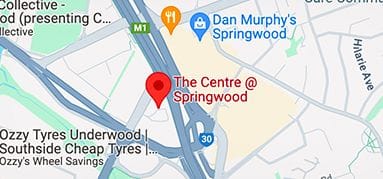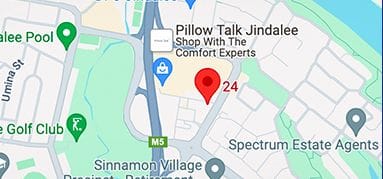Perianaesthetic Blood Pressure Monitoring and Management
Perianaesthetic Blood Pressure Monitoring and Management
Arterial Blood Pressure
Oxygen delivery to tissues (peripheral perfusion) is critical for good outcomes in all patients undergoing anaesthesia. Peripheral perfusion is determined by the cardiac output and oxygen content of arterial blood, unfortunately we have no easy way of measuring this at the level of the tissues in the clinical setting. Instead, arterial blood pressure (BP) is the most common parameter measured as an objective indicator of tissue and organ perfusion. Arterial blood pressure is the product of cardiac output and systemic vascular resistance and cardiac output is determined by heart rate and stroke volume. Stroke volume is in turn determined by cardiac contractility, preload and afterload.
Mean arterial blood pressure (MAP) is considered the most physiologically important blood pressure measurement as it represents the average upstream pressure for tissue perfusion. The mean blood pressure is a better indicator of organ perfusion than systolic pressure as the MAP is the main factor that overcomes arteriolar resistance and ensures capillary flow. Blood flow through the vital organs is autoregulated when MAP is between 60 and 150mmHg. This means blood flow is constant through the organs if MAP is within these values. If MAP falls below 60mmHg it is likely perfusion of vital organs will become inadequate to maintain oxygen delivery.
Measuring BP - Non-invasive methods
Doppler technique: The blood pressure cuff is placed around an extremity (limb or tail) and connected to a sphygmomanometer. The Doppler ultrasound probe is placed over an artery that is distal to the position of the cuff. Ultrasound gel should be used to improve contact between the ultrasound probe and the skin. Adjust the position of the probe until the pulse wave is audible and a characteristic ‘whoosh’ noise is clearly heard. Inflate the blood pressure cuff until the pulse is no longer audible and slowly deflate the cuff. In dogs, the pressure on the manometer at which the pulse is audible again best corresponds to the systolic pressure (SAP). In cats, the pressure on the manometer at which the pulse is audible again underestimates systolic pressure and is actually closest to the MAP. Advantages of this method are it is a relatively simple technique to perform in anaesthetised patients and the equipment is relatively inexpensive. The disadvantages are it is labour-intensive, requires training, hair or fat can interfere with the doppler signal and it only gives you the systolic (or mean) blood pressure. Another disadvantage is you can only obtain intermittent readings and the pressure determined can vary by ? 10mmHg or more of the true SAP.
Oscillometric monitors: These devices (as found on multiparametric monitors and other portable BP monitors) measure fluctuations in pressure caused by movement of blood flow through the arterial walls. An inflatable bladder (the cuff) of an appropriate size is placed around the distal limb or tail base and connected to a machine that inflates then deflates the bladder. Sensors detect the pressure changes (oscillations) in the cuff during deflation when pulsatile flow returns to the area. Oscillations are first detected at the systolic pressure, reach a maximal amplitude at the mean arterial pressure and then have a minimal amplitude at the diastolic pressure. The advantages of oscillometric devices are they are less labour-intensive and invasive, easier to learn how to use and most monitors can be programmed to take automatic readings at specified time intervals. The disadvantage of these devices is they tend to be more expensive and they may not give reliable readings in small patients or if there are arrhythmias, a slow pulse rate or the patient is hypotensive.
For both the Doppler and oscillometric methods however, trends in blood pressure can be detected and this can be more useful information than the absolute numbers generated. With both methods the cuff size is a critical factor in obtaining reliable pressure readings. The cuff width should be approximately 40% of the diameter of the appendage it is to be applied to. If the cuff is too wide, it will underestimate the blood pressure (i.e. the reading will be artificially lower than it really is). If the cuff is too narrow, it will overestimate the pressure. In addition, if the cuff is too loose on the patient it is possible to obtain an erroneously high reading, and conversely if the cuff is too tight you may get an erroneously low reading.
Invasive Blood Pressure Monitoring
Invasive pressure monitoring is the most accurate and reliable method of monitoring BP and provides continuous information. Invasive monitoring requires placement of an arterial catheter, usually in a dorsal pedal or coccygeal artery or occasionally the femoral artery. An advantage of placing an arterial catheter is this allows you to perform repeated arterial sampling for blood gas analysis. The arterial catheter is connected to a pressure transducer with non-compliant tubing that is flushed with heparinised saline. The transducer needs to be ‘zeroed’ to atmospheric pressure before use, and the transducer needs to be placed at the level of the right atrium to correct for gravity-induced differences in pressure. Factors that can interfere with the arterial waveform produced and cause overdamping of the signal include air bubbles, an underinflated pressure bag, compliant tubing or the catheter tip may be against the wall of the vessel. Using a small catheter (eg. 24g catheter in a small patient) may also cause overdamping however, while systolic pressure is underestimated and diastolic pressure overestimated, the MAP is normally still accurate. Alternatively, the waveform may be underdamped if the tubing is too long, there is increased vascular resistance or if the catheter occludes the vessel lumen completely.
Hypotension
Typically hypotension is defined as a MAP less than 60mmHg and SAP less than 80mmHg. Systemic blood pressure is controlled by neural, hormonal and local mediators when under normal physiological conditions. Anaesthesia and disease processes often interfere with these normal control mechanisms and hypotension occurs frequently in anaesthetised patients both healthy and critically ill. Common causes of hypotension include myocardial depression (decreased contractility due to anaesthetic agents, hypoxaemia, acid-base disturbances, electrolyte imbalances, cardiomyopathy, catecholamine depletion), vasodilation (due to anaesthetic drugs, severe acidosis, severe hypoxaemia, endotoxaemia, septicaemia, anaphylactic reactions), cardiac arrhythmias (bradyarrhythmias, atrial fibrillation, ventricular tachycardia), reduced venous return (due to mechanical ventilation, torsion of great vessels, pericardial effusion), hypovolaemia (caused by haemorrhage, fluid deficits, relative due to vasodilation), vagal stimulation (drug-induced, traction of abdominal organs, ocular pressure), and sympathetic blockade (eg. following epidural administration of local anaesthetics). This is not an exhaustive list of causes, and demonstrates the importance of understanding the causes of hypotension in determining the appropriate treatment. Once hypotension under anaesthesia is detected, it is important to use a stepwise approach to managing the problem.
- Check: anaesthetic depth, SpO2, machine/breathing circuit, is the cuff placed correctly, transducer height etc.
- Check: Heart rate – if bradycardic treat with glycopyrrolate or atropine. If tachycardic assess for likely cause – pain, hypovolemia, arrhythmia?
- Heart rate is ok. Now what?
- Need to decide if hypotension is due to:
- Decreased contractility of heart
- Increased vasodilation
- Hypovolemia/blood loss
- Other cause/s
Assessing hypotension with the same approach each time can aid in quickly determining the most appropriate treatment. Doses of inhalant anaesthetics and other cardiovascular depressant drugs should be reduced or adjusted when the anaesthetic depth is determined to be too deep. When hypotension is caused by bradycardia and vasodilation, fluid therapy will most likely have no effect unless the patient is significantly dehydrated and hypovolemic. Treatment of bradycardia is with an anticholinergic agent. Glycopyrrolate (5-10mcg/kg IV) generally causes less tachycardia than atropine and the duration of action is longer at 40-60 minutes. The disadvantage of glycopyrrolate is that it takes longer to take effect than atropine and when used at low doses may cause the heart rate to decrease further due to delayed action in receptor activation. This decrease in heart rate can be overcome by administering a second dose of glycopyrrolate. Atropine (0.01-0.04mg/kg IV) has a faster onset time with a shorter duration of action (20-40 minutes). However atropine is more likely to induce tachycardia than glycopyrrolate which may be detrimental to cardiovascular function and blood pressure. Similar to glycopyrrolate, at low doses atropine may cause a further decrease in heart rate which can be treated with additional administration of atropine. Both glycopyrrolate and atropine may not work in cases where bradycardia is caused by hypothermia. In contrast, alpha-2 agonist -induced bradycardia with hypertension should not be treated.
Fluid therapy during anaesthesia aims to correct fluid deficits and counteract ongoing losses. Balanced isotonic crystalloids are generally the first choice of fluid therapy. Hypotension caused by genuine hypovolemia may be treated with 1-2 boluses of crystalloids of 10ml/kg administered over 10-15 minutes. Care should be taken to avoid excessive administration of fluids in euvolemic patients however, as fluid overload is possible. If hypovolemia and hypotension persist a colloid such as Voluven or plasma in 2-5ml/kg boluses can also be administered. Tachycardia may be an indicator of hypovolemia and can affect diastolic filling and reduce coronary perfusion, decreasing cardiac output. Where tachycardia is caused by hypovolemia, fluid boluses in 10ml/kg doses are appropriate. It should be noted that hypotension is most often multifactorial in cause and administration of fluids alone is unlikely to correct hypotension if other factors (eg. vasodilation) are not addressed at the same time. Using goal-directed therapy and frequent reassessment of the patient to guide fluid therapy can assist in avoiding fluid overload and determining appropriate treatment of hypotension.
Anaesthetic agents cause a decrease in myocardial contractility and systemic vascular resistance. When hypotension is persistent and unresponsive to the previously mentioned treatments then sympathetic support is likely required, particularly when the patient is euvolemic. Mixed inotrope/vasopressor agents such as ephedrine and dopamine are the most commonly utilised blood pressure support drugs used in small animals. Ephedrine (50- 100mcg/kg IV) acts as a weak agonist at alpha and beta receptors and can improve blood pressure, however has a short duration of action (15-20 minutes) and after repeated doses may cause tachyphylaxis. Dopamine has been shown to be more effective at increasing blood pressure in anaesthetised dogs and cats than dobutamine in otherwise healthy animals. Dopamine (5-15 mcg/kg/min) is an agonist at dopamine, beta and alpha receptors and causes increased cardiac contractility at lower doses, with increasing effects on systemic vascular resistance at higher doses. At very high doses dopamine can cause tachyarrhythmias and the dose should be reduced if this occurs. Dobutamine is considered a ‘pure’ inotrope and is useful when it is important to avoid vasoconstriction due to pre-existing cardiac disease. Dobutamine (1-5mcg/kg/min) is a beta-1 agonist with little effect on vascular resistance at low doses. At doses higher than 5mcg/kg/min vasodilation may occur which can counteract the effect of improved contractility, resulting in no change in blood pressure. In cases of severe vasodilation, such as occurs in septic patients, noradrenaline (0.05–2 µg/kg/min; an alpha-1 receptor agonist) ,which produces profound arterial vasoconstriction, and/or arginine vasopressin (0.5–2 mU/kg/min, IV), which causes arterial and venoconstriction and increase venous return, are required to overcome the physiological cause of hypotension.
It is important to understand the physiologic, humoral and tissue mechanisms that regulate blood pressure. Hypotension is only treated appropriately when the underlying causes are properly identified. Ultimately, the therapy will aim to maintain appropriate tissue perfusion in anaesthetised patients to maximise patient outcomes.
References
- Dugdale, A. Veterinary Anaesthesia: Principles to Practice, Blackwell Publishing, 2010.
- Bosiack AP, Mann FA, Dodam JR, Wagner-Mann CC, Branson KR. Comparison of ultrasonic Doppler flow monitor, oscillometric, and direct arterial blood pressure measurements in ill dogs. J Vet Emerg Crit Care. 2010;20:207–215.
- Caulkett NA, Cantwell SL, Houston DM. A comparison of indirect blood pressure monitoring techniques in the anesthetized cat. Vet Surg. 1998;27(4):370-7.
- Duke-Novakovski T, de Vries M, Seymour C, eds. In: BSAVA Manual of Canine and Feline Anaesthesia and Analgesia. 3 rd Ed, Gloucester, 2016.
- Iizuka T, Kamata M, Yanagawa M, Nishimura R. Incidence of intraoperative hypotension during isoflurane-fentanyl and propofol-fentanyl anaesthesia in dogs. Vet J. 2013;198:289–291.
- Silverstein DC, Kleiner J, Drobatz KJ. Effectiveness of intravenous fluid resuscitation in the emergency room for treatment of hypotension in dogs: 35 cases (2000–2010). J Vet Emerg Crit Care. 2012;22:666–673.
- Valverde A, Gianotti G, Rioja-Garcia E, and Hathway A. Effects of high-volume, rapid-fluid therapy on cardiovascular function and hematological values during isoflurane-induced hypotension in healthy dogs. Can J Vet Res. 2012 Apr; 76(2): 99– 108.
- Pascoe PJ, Ilkie JE, Pypendop BH. Effects of increasing infusion rates of dopamine, dobutamine, epinephrine, and phenylephrine in healthy anesthetized cats. AM J Vet Res 2006 Sep;67(9):1491-9.
- Rosati M, Dyson DH, Sinclair MD, Sears WC. Response of hypotensive dogs to dopamine hydrochloride and dobutamine hydrochloride during deep isoflurane anesthesia. Am J Vet Res 2007 May;68(5):483-94.
- Chen HC, Sinclair MD, Dyson DH. Use of ephedrine and dopamine in dogs for the management of hypotension in routine clinical cases under isoflurane anesthesia. Vet Anaesth Analg. 2007;34:301–311.
| Tags:Internal MedicinePathologyVSS Resource Area |
)




